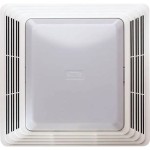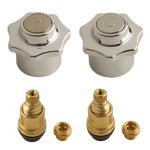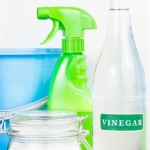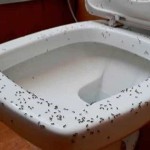How to Refinish a Bathroom Sink
A worn-out or damaged bathroom sink can significantly detract from the overall appearance of a bathroom. Replacing the sink entirely can be a costly and disruptive undertaking. Refinishing, also known as resurfacing or reglazing, presents a viable and economical alternative for restoring the sink's aesthetic appeal and extending its lifespan. This article provides a comprehensive guide on how to refinish a bathroom sink, covering the necessary preparations, materials, and application techniques to achieve a professional-looking result.
The refinishing process involves thoroughly cleaning the sink's surface, repairing any chips or cracks, applying a bonding agent, and then coating the sink with a specialized refinishing paint or epoxy. When executed correctly, refinishing can transform an old, unsightly sink into a visually appealing and functional fixture. The project demands careful attention to detail and adherence to safety precautions, but it can be accomplished by homeowners with moderate DIY skills.
Before commencing the project, it is crucial to assess the condition of the sink. Refinishing is best suited for sinks with surface damage such as scratches, stains, minor chips, and dull finishes. Severely damaged sinks with large cracks, structural weaknesses, or extensive rust may be beyond repair and require replacement. Proper evaluation ensures that refinishing is the appropriate solution and that the desired outcome can be achieved.
Key Point 1: Preparation and Materials
The success of any refinishing project hinges on thorough preparation. This stage involves gathering the necessary materials, ensuring adequate ventilation, protecting surrounding surfaces, and meticulously cleaning the sink. Neglecting any of these steps can compromise the final result and lead to premature failure of the refinished surface.
The required materials include:
- Refinishing Kit: These kits typically contain epoxy or polyurethane-based refinishing paint, a hardener, etching solution, and application tools. Choose a kit specifically designed for bathroom sinks, considering the type of material (porcelain, ceramic, acrylic, etc.) of the existing sink.
- Cleaning Supplies: This includes a heavy-duty cleaner, abrasive pads (such as Scotch-Brite), a scrub brush, and clean rags.
- Repair Materials: For filling chips and cracks, epoxy filler or patching compound designed for porcelain or ceramic is needed.
- Safety Gear: A respirator mask is essential to protect against harmful fumes from the refinishing chemicals. Eye protection (goggles), gloves, and protective clothing are also necessary.
- Sandpaper: Various grits of sandpaper (e.g., 220, 320, 400 grit) are required for smoothing the surface and preparing it for the bonding agent and topcoat.
- Tack Cloth: Used to remove dust and debris after sanding.
- Bonding Agent: This promotes adhesion between the old surface and the new coating.
- Painter's Tape and Plastic Sheeting: To protect surrounding fixtures, walls, and flooring.
- Drop Cloths: To further protect the floor from spills and drips.
- Ventilation: Fans and open windows to ensure adequate airflow and minimize exposure to fumes.
Begin by thoroughly ventilating the bathroom. Open windows and use a fan to circulate air. Cover all surrounding surfaces, including the countertop, walls, and floor, with plastic sheeting and painter's tape. Remove the drain hardware or cover it securely with tape to prevent it from being coated with the refinishing material.
Next, clean the sink meticulously using a heavy-duty cleaner and abrasive pads. Remove any grease, soap scum, mildew, or other contaminants. Rinse the sink thoroughly with clean water and allow it to dry completely. This initial cleaning is crucial for ensuring proper adhesion of the refinishing materials.
Inspect the sink for any chips, cracks, or imperfections. Use an epoxy filler or patching compound to repair these areas. Follow the manufacturer's instructions for mixing and applying the filler. Allow the filler to dry completely, then sand it smooth with fine-grit sandpaper (e.g., 320 or 400 grit) to blend it seamlessly with the surrounding surface. Remove any sanding dust with a tack cloth.
Key Point 2: Application of Bonding Agent and Refinishing Coating
After the sink has been thoroughly cleaned and repaired, the next step is to apply a bonding agent. The bonding agent acts as a primer, creating a strong adhesive layer between the existing surface and the refinishing coating. This is a critical step that ensures the longevity and durability of the refinished surface.
Apply the bonding agent according to the manufacturer's instructions. Typically, this involves applying a thin, even coat using a brush, roller, or spray applicator. Allow the bonding agent to dry completely as specified by the manufacturer. This drying time is crucial for achieving optimal adhesion.
Once the bonding agent is dry, prepare the refinishing coating. This usually involves mixing two components: the refinishing paint or epoxy and a hardener. Follow the manufacturer's instructions precisely for mixing ratios and mixing times. Incorrect mixing can result in a coating that does not cure properly or has poor durability.
The application of the refinishing coating is typically done in multiple thin coats. This technique helps to prevent runs, sags, and bubbles, resulting in a smoother, more uniform finish. Use a brush, roller, or spray gun to apply the coating, depending on the type of refinishing kit and the desired finish.
When using a brush or roller, apply the coating in smooth, even strokes, overlapping each stroke slightly to ensure complete coverage. If using a spray gun, hold the gun approximately 6-8 inches from the surface and apply the coating in a consistent, overlapping pattern. Avoid applying the coating too thickly, as this can lead to runs and sags.
Allow each coat of the refinishing coating to dry completely before applying the next coat. Refer to the manufacturer's instructions for recommended drying times. Typically, at least two coats are required for adequate coverage and durability. After the final coat, allow the sink to dry completely for the recommended curing time, which can be several hours or even days. Avoid using the sink during this time to allow the coating to fully harden and cure.
Key Point 3: Sanding, Polishing, and Final Touches
Once the final coat of refinishing coating has completely cured, inspect the surface for any imperfections, such as dust particles, runs, or sags. These imperfections can be removed by gently sanding the surface with very fine-grit sandpaper (e.g., 600 or 800 grit). Use wet sanding techniques to minimize dust and prevent scratches. Dip the sandpaper in water and lightly sand the affected areas, using a circular motion.
After sanding, clean the surface thoroughly with a tack cloth to remove any sanding residue. The next step is to polish the refinished surface to achieve a smooth, glossy finish. Use a polishing compound specifically designed for use with automotive finishes or refinished surfaces. Apply the polishing compound to a soft cloth and rub it onto the surface in a circular motion.
Continue polishing until the desired level of gloss is achieved. Remove any remaining polishing compound with a clean, soft cloth. If necessary, apply a wax coating to further protect and enhance the shine of the refinished surface. Follow the manufacturer's instructions for applying the wax.
Once the polishing is complete, carefully remove the painter's tape and plastic sheeting from the surrounding surfaces. Reinstall the drain hardware or remove the tape covering it. Clean the bathroom thoroughly to remove any dust or debris. Allow the sink to cure for a few additional days before regular use, if recommended by the manufacturer of the refinishing kit.
Proper maintenance is essential for preserving the appearance and extending the lifespan of the refinished sink. Avoid using abrasive cleaners or scouring pads, as these can scratch or damage the finish. Clean the sink regularly with a mild detergent and a soft cloth. Wipe up spills promptly to prevent staining. With proper care and maintenance, a refinished bathroom sink can provide years of use and beauty.
While this detail provides a thorough approach to DIY sink refinishing, engaging a professional refinisher remains a viable option. Professional refinishers possess experience, specialized equipment, and access to high-quality materials. Consulting with a professional can be especially beneficial for extremely damaged sinks, unique materials, or those unsure undertaking such projects independently.

How To Refinish Bathroom Vanity Top With Diy Resin Thediyplan

Resurfacing An Old Sink Diy Oak Hill Home Solutions

Paint Bathroom Vanity Countertop Sink So Easy A Piece Of Rainbow

How To Paint A Sink It All Started With

How To Refinish Bathroom Countertops Domestic

Paint Bathroom Vanity Countertop Sink So Easy A Piece Of Rainbow

How To Paint A Sink Diy Bathroom Project Your Budget Will Love

How To Refinish A Bathroom Vanity Bower Power

How To Easily Spray Paint Bathroom Countertops My Homier Home

How To Paint A Bathroom Sink Ace Hardware







